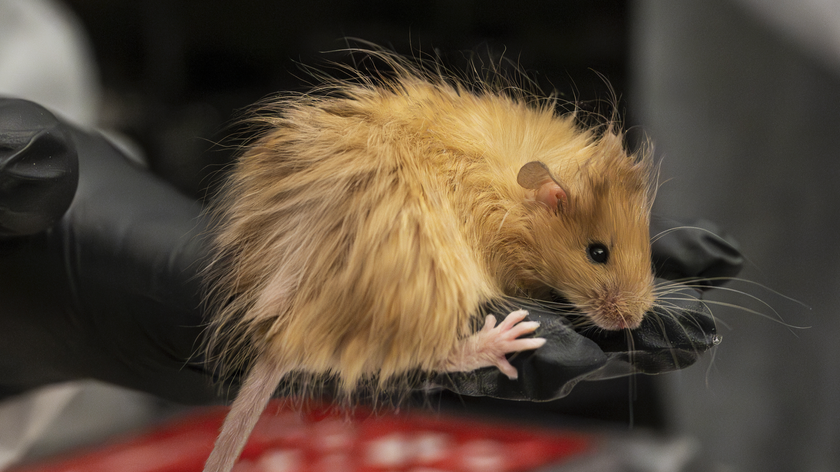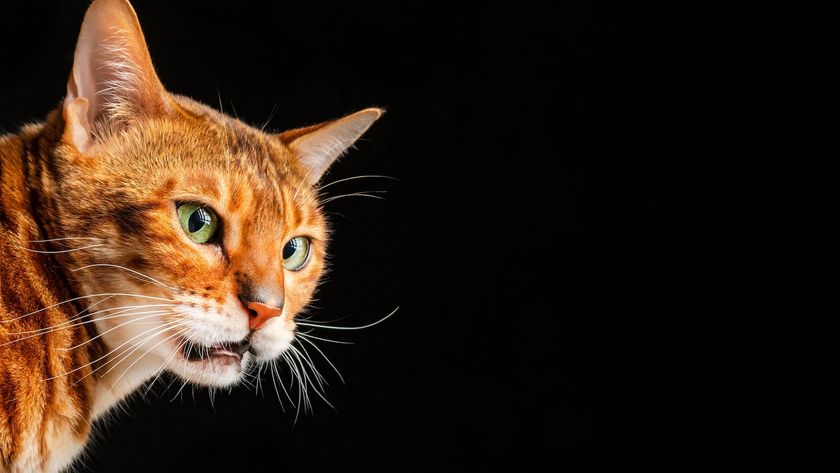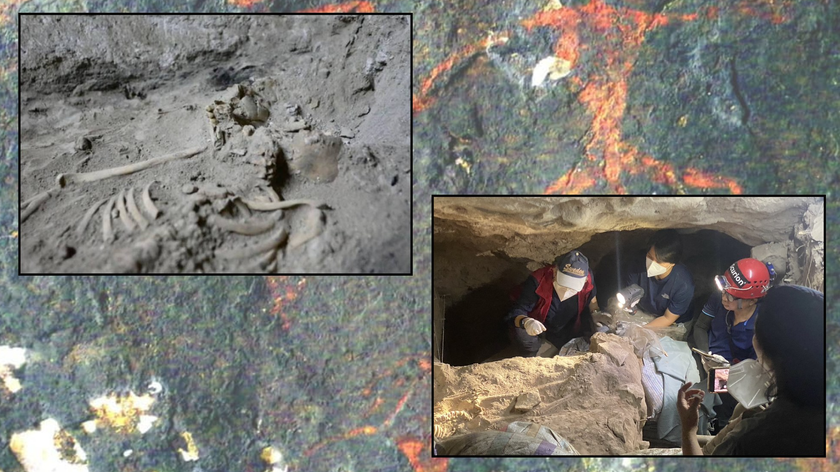Images: 100-Year-Old Lonesome George Tortoise Goes on Exhibit
Lonesome George
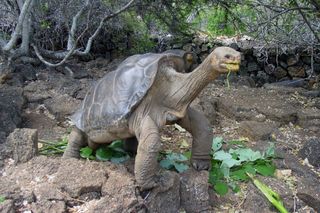
Lonesome George was the last-documented member of Chelonoidis abingdoni, a tortoise species native to Pinta Island in the Galapagos. When he died of natural causes on June 24, 2012, scientists said he was more than 100 years old. His death marked the extinction of the Pinta Island tortoise subspecies. Here, a photo of George in 2005 at the Charles Darwin Research Station in Ecuador, where he lived for 40 years. [Read full story]
Galapagos to NYC
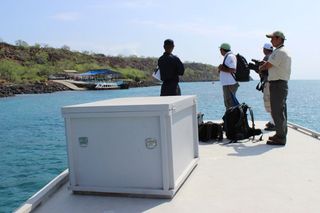
After his death, Lonesome George had to be packed up and shipped to the United States for preservation. The process involved scientists from the American Museum of Natural History, the Galapagos National Park Service, the SUNY College of Environmental Sciences and Forestry and the Galapagos Conservancy. [Read full story]
Unpacking George
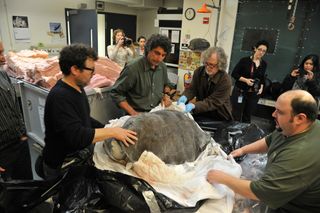
Conservation and taxidermy experts unpack Lonesome George upon his arrival from the Galapagos at the American Museum of Natural History in July 2012. [Read full story]
Hefty load
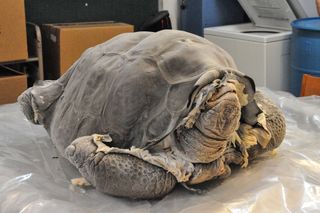
The tortoise's body weighs 200 pounds (90 kilograms) and measures 5 feet (1.5 meters) long. [Read full story]
More Georges?
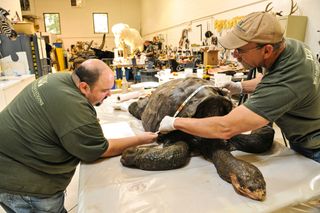
During his life, Lonesome George never reproduced. Even so, a study published in 2012 in the journal Biological Conservation found that some genes from George's subspecies may live on. DNA samples from more than 1,600 giant tortoises in the Galapagos Islands revealed 17 individuals were hybrids with a parent from the subspecies Chelonoidis abingdoni. Here, taxidermy experts measure Lonesome George. [Read full story]
Measuring George
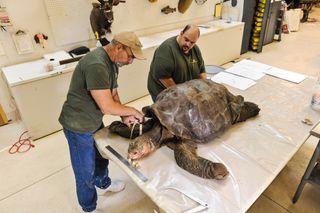
Another image of George's body undergoing measurements at the Wildlife Preservations in Woodland Park, New Jersey, taxidermy experts measure Lonesome George shortly after his arrival. Lonesome George's extremely long neck and "saddle-backed" shell that rises slightly in front can be seen in this image. [Read full story]
Casting
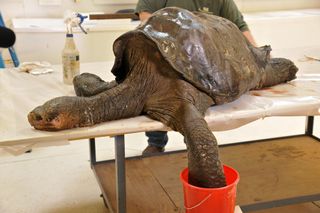
In the early stages of the taxidermy process, experts took multiple casts of Lonesome George's extremities for future reference. [Read full story]
Sign up for the Live Science daily newsletter now
Get the world’s most fascinating discoveries delivered straight to your inbox.
Leg cast
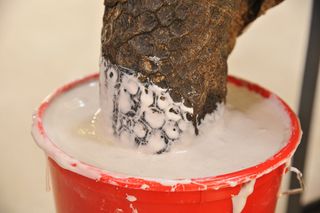
Taxidermy experts continue making casts of Lonesome George's extremities. [Read full story]
Head cast
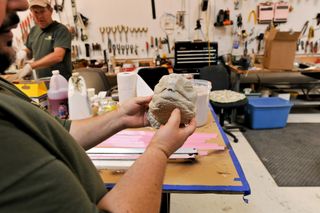
Here, a cast of Lonesome George's head. [Read full story]
Pink legs
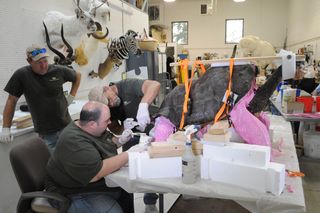
Taxidermy experts continue making casts of Lonesome George's extremities. [Read full story]
Tortoise sketch
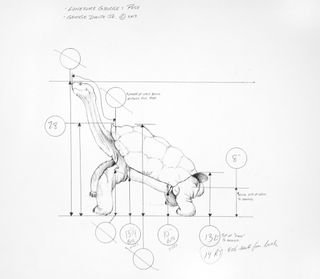
Wildlife Preservations founder George Dante drew this sketch of the pose portrayed in Lonesome George's taxidermy mount. The tortoise was named after the famous 1950s American TV comedian George Gobel, who called himself "Lonesome George." [Read full story]

